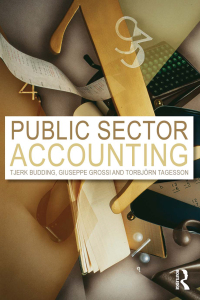Question
3. A researcher has developed a test to measure Acceptance of Psychological Misconceptions (APM). This scale was given to all students in her Introductory
3. A researcher has developed a test to measure Acceptance of Psychological Misconceptions (APM). This scale was given to all students in her Introductory Psychology course, where they were presented with a lecture on such misconceptions the previous week. Results indicate that the APM scores for this population (students who attended the lecture) were normally distributed with a mean of 20.00 and a standard deviation of 4.00. Some students who were unfortunately absent from the lecture also completed the APM. The researcher found four test papers left behind in the classroom, and before scoring the tests, wondered if the students who wrote these tests had likely attended the lecture the week before (and so should have a mean close to the population mean). She decided to perform a one-sample Z-test for these four APM test papers, to see if their mean is too far away from the overall class mean to likely be due to chance variation alone, i.e., the scores are so extreme that the four students writing them had probably not attended the lecture on misconceptions. She decided to use an alpha level of .05. When asked for hypotheses, provide the symbolic form rather than the worded form. a) If the researcher was just interested in a possible difference, without regard to whether it was higher or lower than the class mean, would she want to use a one- or -two tailed test? (1pt) b) What is the null hypothesis for this test? (1 pt) H: c) What is the research hypothesis for this test? (1 pt) H: d) Given that the APM sample mean in question was 17.50 (with n = 4), what is the probability that the sample was randomly drawn from the population of students who attended the lecture? (Show the formula and all of your work; 4 pts) e) What would the researcher's decision be regarding the null hypothesis (i.e., reject or fail to reject the null hypothesis)? Explain why she would reach this decision. (2 pts) f) Based on this decision, would the researcher conclude that this sample mean probably differed from the population mean by chance alone, or by more than just chance alone? (I pt) g) Could the researcher be making a Type I error in this case? (1 pt) h) Could the researcher be making a Type II error in this case? (1 pt) The researcher then gave the APM test to another group of 9 Intro psych students, those who happened to show up for class which had been announced as being cancelled. She suspected that these students had not been to class lately, and had thus probably missed the lecture on psychological misconceptions. Accordingly, she hypothesized that these students' APM test scores, on average, would be below the population mean of 20. She scored the second sample of APM tests and found the average score to be 17.60. i) Since the researcher is only interested in determining if this sample mean was below the class (population) mean, would she want to conduct a directional or nondirectional test? (I pt) i) What is the null hypothesis for this test? (1 pt) H: k) What is the research hypothesis for this test? (I pt) H: i) Given that the sample mean was actually 17.60, what is the probability that it was randomly drawn from the population of students who attended the lecture? (Show the formula and all of your work; 4 pts) What is Z for this test? (1 pt) m) What would the researcher's decision be regarding the null hypothesis (i.e., reject or fail to reject the null hypothesis)? Explain why she would reach this decision. (2 pts) n) Based on this decision, would the researcher conclude that this sample mean probably differed from the population mean by chance alone, or by more than just by chance alone? (1 pt) o) Could the researcher be making a Type I error in this case? (1 pt) p) Could the researcher be making a Type II error in this case? (1 pt) After checking her office, the researcher found another set of 16 tests. She wondered whether or not this sample's test mean was likely to have come from the population of students who had attended the lecture. Suspecting another low mean, she again decided to see if this score was below the class mean. q) What is the null hypothesis for this test? (I pt) H r) What is the research hypothesis for this test? (1 pt) H: 8) What would the critical Z score be for this test? (I pt) t) The researcher determined this APM sample mean to equal 22.60. Computing the obtained Z score, what would the researcher's decision be regarding the null hypothesis? Explain why she would reach this decision. Note: this may be somewhat of a trick question; check the wording of the question and your results carefully. (Show the formula and all of your work; 5 pts) u) Could the researcher be making a Type I error in this case? (1 pt) v) Could the researcher be making a Type II error in this case? (1 pt)
Step by Step Solution
There are 3 Steps involved in it
Step: 1

Get Instant Access with AI-Powered Solutions
See step-by-step solutions with expert insights and AI powered tools for academic success
Step: 2

Step: 3

Ace Your Homework with AI
Get the answers you need in no time with our AI-driven, step-by-step assistance
Get Started






